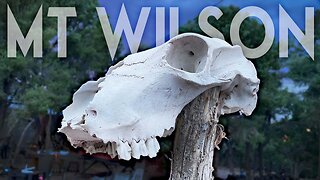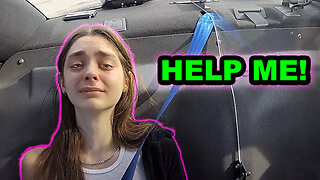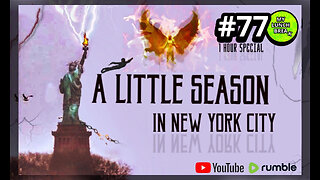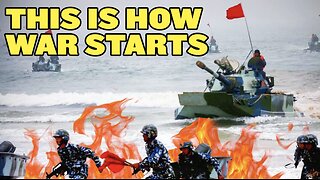NDSM | Amsterdam Street Art | NL
Checking out the street art at NDSM in Amsterdam North. 03/10/22.
NDSM is a neighborhood in Amsterdam, Netherlands located on the former terrain of the Nederlandsche Dok en Scheepsbouw Maatschappij (NDSM) shipbuilding company. It is located in the Amsterdam-Noord borough along the IJ river and can be reached by ferry from Amsterdam Centraal station. After the shipyard closed, the various buildings were occupied by squatters before being gentrified in the 2000s, becoming offices for groups such as Greenpeace, MTV, Pernod Ricard, Red Bull and ViacomCBS. The East part of the former wharf houses a large number of art galleries and festivals throughout the year. The IJhallen is the biggest flea market in Europe, it also houses various populair restaurants Pllek, IJver, Loetje aan het IJ, Noorderlicht, Next. NDSM-West is redeveloped as a mixed-use residential area with high-rise buildings up to 120 meters. By 2034 NDSM-West will have 5000 residential units. NDSM-Oost will be redeveloped into a city park with art galleries and the monumental buildings.
History
The Nederlandsche Dok en Scheepsbouw Maatschappij (NDSM) existed until 1984, building and repairing ships. After the 90 hectare area of docks and shipyards became derelict, it was bought up by the Amsterdam-Noord borough.
In the 1990s, NDSM was largely squatted before Amsterdam-Noord began an urban regeneration process in 1999. The squatters realised they needed to adapt to the new situation and formed a foundation called Kinetisch Noord (Kinetic North) to represent their interests.[1] A number of squats which were seen as cultural hotspots were legalized across the city and Kinetisch Noord became engaged in this process, arguing that NDSM was an incubator.
Incubator
In the 2000s, NDSM became popular as a cultural incubator zone, despite its relative distance from the centre of Amsterdam. Groups such as Red Bull, HEMA, MTV and publishing company VNU set up offices and as a result property prices rocketed. At around the same time, other post-industrial zones in other European cities have been redeveloped, such as Andrejsala in Riga, HafenCity in Hamburg, Kaapelitehdas in Helsinki, the Luma factory in Stockholm, Mediaspree in Berlin, the Northern Quarter in Manchester.
According to Lonely Planet, NDSM is a "derelict shipyard turned edgy arts community." Most of the yearly Over het IJ festival takes place in NDSM. The last remaining hammerhead crane, Hensen Kraan 13, was dismantled in July 2013 and transferred to a yard in Franeker to be refurbished and converted into luxury hotel rooms. On 22 October 2013 the crane returned to become the Crane Hotel Faralda with three hotel suites and a television studio. As of 2019, NDSM still contained the huge Scheepsbouwloods (shipbuilding warehouse) and drydock. Organisations using buildings on the terrain included Greenpeace, Pernod Ricard and ViacomCBS. There is also a Doubletree hotel and a botel. The decommissioned Russian submarine (NATO reporting name Foxtrot, Russian Navy pennant number B-80) was removed from NDSM in December 2019 and scrapped in Vlaardingen early in 2020.
NDSM abounds with artistic expression, and the transformed shipyard is one of the best spots for graffiti and street art in the city. New pieces emblazon sheds and shipping containers almost weekly, and the second you step off the ferry, the colossal Let me be Myself mural of Anne Frank by Eduardo Kobra smiles down on you. Dedicated entirely to this urban art form, STRAAT Museum is a great place to start if you’re interested in seeing more. You won’t be thinking ‘I could have painted that’ as you explore this cavernous space filled with over 150 site-specific works, some of which reach to the ceiling.
NDSM Wharf has blossomed into an enormous cultural hotspot in recent years with a vibrant artist community and an ever-expanding variety of bars and restaurants. With grounds exceeding the size of ten football pitches, the area hosts multi-disciplinary festivals, performances, exhibitions, dance parties and a wide range of other events in unique, post-industrial surroundings. The area itself is served by free public transport ferries.
-
 16:31
16:31
GeekyNerdyTechy
1 day agoZHIYUN Fiveray M20C Combo Light Review & Tutorial
25.7K5 -
 8:29
8:29
ParisDemers
22 hours agoThe Kratos/God Of War Workout Program (His Real-Life Training)
19.1K3 -
 16:14
16:14
CarlCrusher
17 hours agoSkinwalker's Evil Twin - Beyond Skinwalker Ranch Behind the Scenes Season 1 ep 2
20.3K6 -
 58:35
58:35
Crime Circus
23 hours agoMackenzie Shirilla KlDNAPPED!! True Crime Documentary!
24.1K12 -
 8:03
8:03
Bearing
20 hours agoE-Safety Karen INVENTS Elon Musk HARASSMENT While LEAKING Private Details!
28.9K76 -
 17:16
17:16
Clownfish TV
1 day agoMedia Melting Down Over Mainstream Media Meltdown...
52.7K63 -
 1:11
1:11
Gamazda
18 hours agoFlight of the Bumblebee - Rimsky-Korsakov
68.6K61 -
 1:00:21
1:00:21
MYLUNCHBREAK CHANNEL PAGE
19 hours agoA Little Season in New York City
73.2K72 -
 11:56
11:56
China Uncensored
20 hours agoThe Philippines Threaten War with China
60.9K46 -
 33:00
33:00
Degenerate Jay
1 day agoThe James Bond Games Have Been Lost To Time
33.3K8